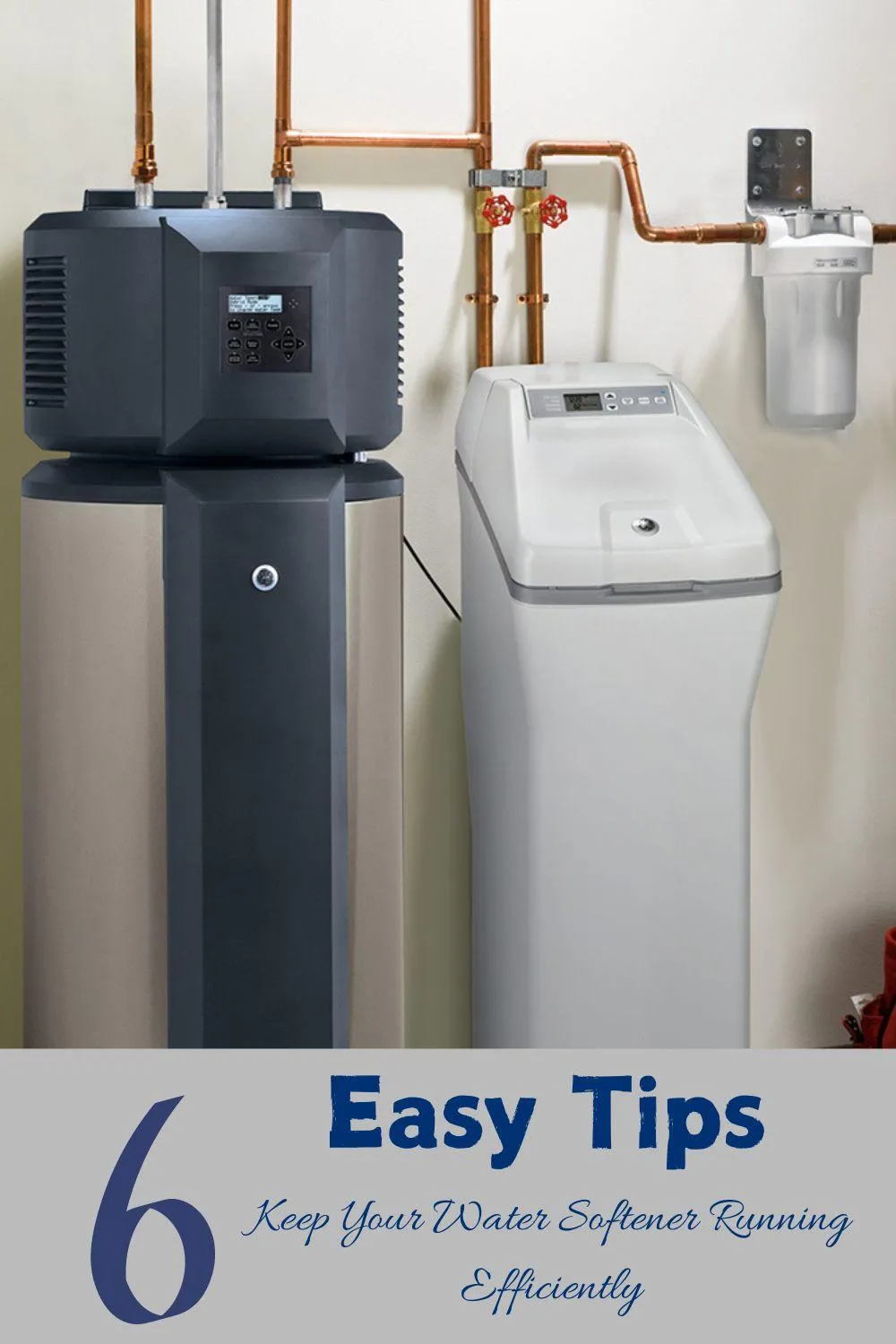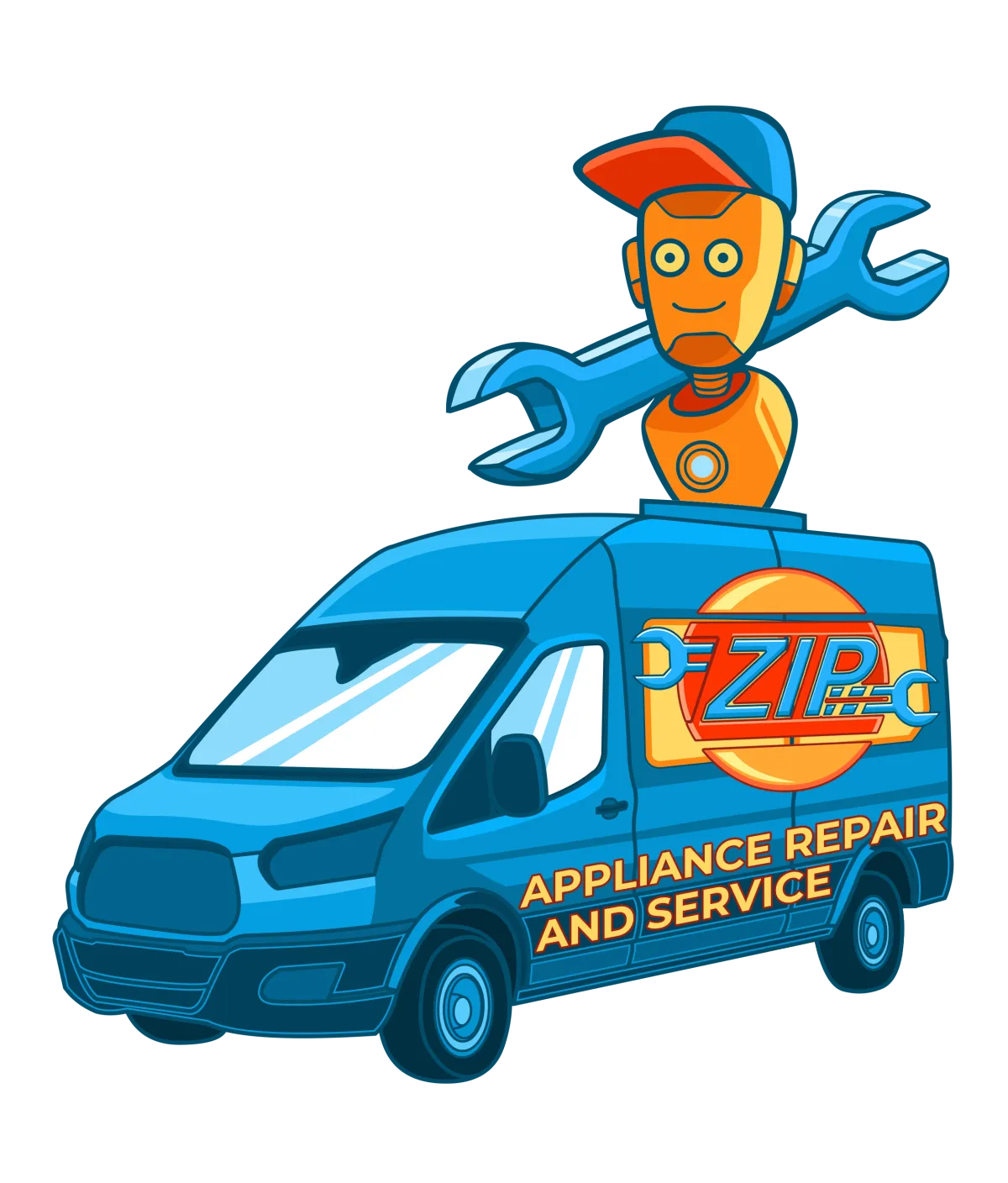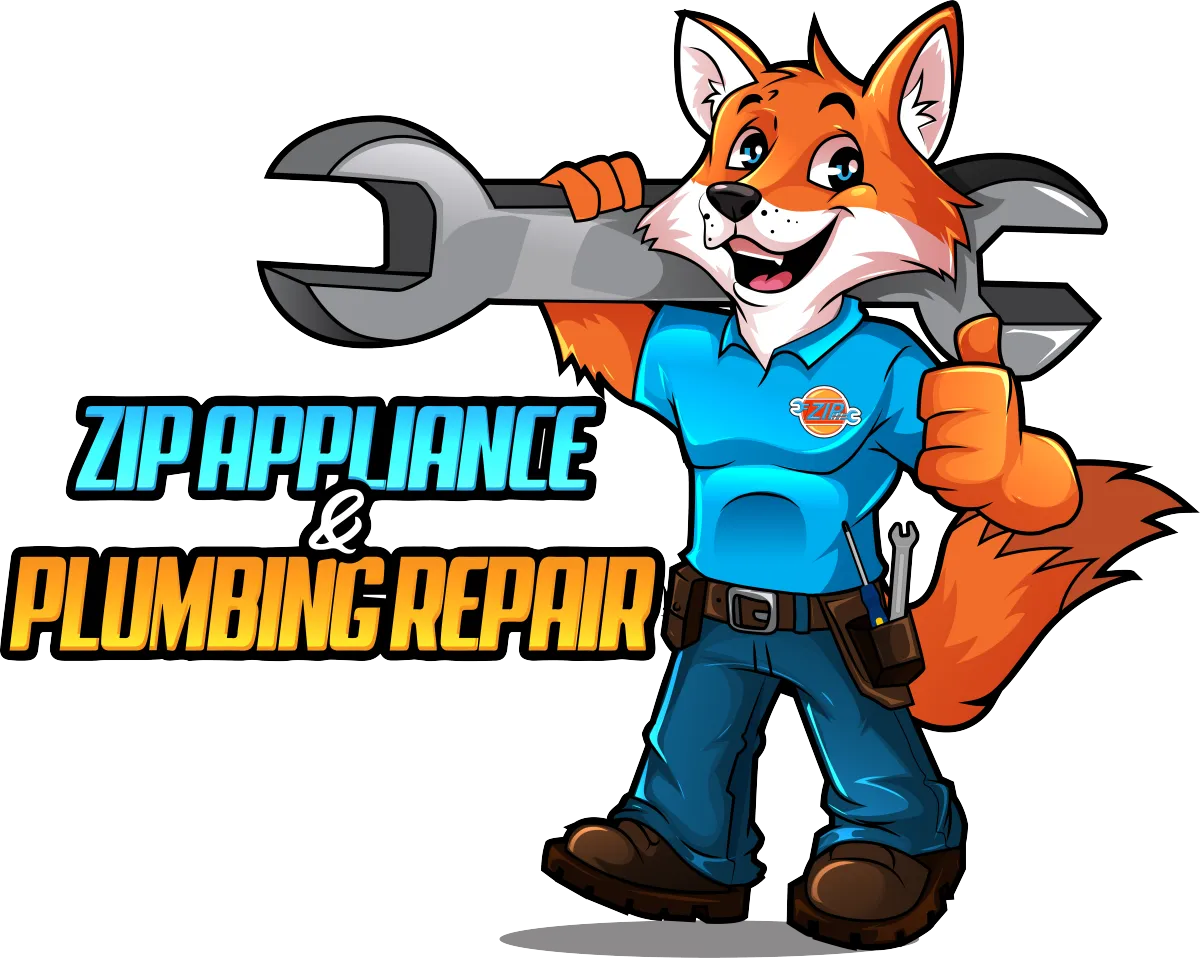Phone: (559) 272-4265
Appliance Repair Tips For Bakersfield, CA Residents

Prevent Water Softener Issues with These 6 Essential Tips
Don't let hard water ruin your day. Keep your water softener running smoothly with regular maintenance. - Appliance Boss
Introduction
Water softeners have become indispensable in many households, providing a plethora of benefits. These devices effectively reduce the mineral content in water, making it softer and more pleasant to use. However, like any appliance, water softeners require regular maintenance to ensure optimal performance and longevity. In this comprehensive guide, we will delve into the intricacies of water softener maintenance, covering everything from routine checks to troubleshooting common issues.
What is a Water Softener?
A water softener is a residential or commercial appliance designed to remove minerals, primarily calcium and magnesium, from hard water. These minerals can cause various problems, including scale buildup, soap scum, and reduced appliance efficiency. By softening water, a water softener helps protect plumbing systems, appliances, and fixtures from the detrimental effects of hard water.

How Does a Water Softener Work?
Water softeners employ a process known as ion exchange to remove hardness minerals. The heart of the softener is a resin bed containing ion exchange beads. As hard water flows through the resin bed, the calcium and magnesium ions are exchanged for sodium ions. These sodium ions are released into the water, making it soft. The resin bed is periodically regenerated to remove the accumulated calcium and magnesium ions and replenish the sodium ions.
Why is Water Softener Maintenance Important?
Regular maintenance is crucial for ensuring the proper functioning of your water softener. Neglecting maintenance can lead to various problems, including:
Reduced water quality: A poorly maintained softener may fail to effectively remove hardness minerals, resulting in hard water.
Increased water consumption: A malfunctioning softener may require more water to regenerate, leading to higher water bills.
Premature wear and tear: Hard water can accelerate the deterioration of plumbing systems, appliances, and fixtures. Proper maintenance can help prolong their lifespan.
Costly repairs: Ignoring maintenance issues can lead to more significant problems that require expensive repairs.
Common Water Softener Problems
While water softeners are generally reliable, they can encounter various issues. Some of the most common problems include:
Hard water buildup: Scale buildup can occur in the softener's components, reducing its efficiency.
Salt bridge formation: Salt bridges can form in the brine tank, preventing the salt from dissolving properly.
Leaky brine tank: A leaky brine tank can cause salt to spill and contaminate the surrounding area.
Clogged resin bed: Debris and contaminants can clog the resin bed, hindering its ability to soften water.
Power supply issues: Electrical problems can prevent the softener from functioning correctly.
Control valve malfunctions: A faulty control valve can disrupt the softener's regeneration cycle.
Preventive Maintenance Tips
To prevent common water softener problems and ensure optimal performance, it is essential to follow these preventive maintenance tips:
Regular Salt Brine Refills
How often to refill salt brine: The frequency of salt brine refills depends on the size of your softener and your water usage. Generally, you should check the salt levels weekly and refill as needed.
Signs of low salt levels: Low salt levels can be indicated by hard water, reduced water flow, or a salt alarm.
Importance of using high-quality salt: Using high-quality salt is crucial for the efficient operation of your softener. Avoid using rock salt or other low-quality alternatives.
Water Softener Flushing
Benefits of regular flushing: Flushing your softener can help remove accumulated debris, prevent scale buildup, and ensure optimal performance.
How to flush a water softener: The flushing process varies depending on the specific model. Consult your owner's manual for detailed instructions.
Recommended flushing frequency: It is generally recommended to flush your softener once a month.
Inspecting and Cleaning the Resin Bed
Signs of a dirty resin bed: A dirty resin bed may result in reduced water quality or uneven softening.
How to clean the resin bed: The cleaning process involves backwashing the softener to remove debris. Consult your owner's manual for specific instructions.
Importance of regular inspections: Regular inspections can help identify potential issues with the resin bed and prevent more significant problems.
Checking for Leaks
Common areas for leaks: Leaks can occur in the brine tank, pipes, or valves.
How to detect leaks: Regularly inspect your softener for signs of leaks, such as wet spots or puddles.
Addressing leaks promptly: If you discover a leak, address it promptly to prevent water damage and avoid costly repairs.
Monitoring Water Hardness
Testing water hardness regularly: Use a water hardness test kit to monitor the hardness levels in your home.
Adjusting softener settings as needed: If the water hardness levels are too high or too low, adjust the softener's settings accordingly.
Maintaining optimal water hardness levels: Aim to maintain a water hardness level between 3 and 8 grains per gallon.
Power Supply and Control Valve Maintenance
Inspecting electrical connections: Regularly check the electrical connections to ensure they are secure.
Cleaning and lubricating control valves: Clean and lubricate the control valves according to the manufacturer's recommendations.
Addressing power supply issues promptly: If you experience power supply problems, address them immediately to avoid disruptions in your water supply.
Troubleshooting Water Softener Problems
If you encounter issues with your water softener, here are some troubleshooting tips:
Identifying the Problem
Common symptoms of water softener issues: Symptoms may include hard water, reduced water flow, unusual noises, or a salt alarm.
Gathering information for troubleshooting: Gather information about the problem, such as when it started, any recent changes, and any error messages.
Troubleshooting Hard Water Buildup
Checking salt levels and replenishing as needed: Ensure that the salt levels are adequate and replenish as necessary.
Flushing the softener to remove scale buildup: Follow the flushing procedure outlined in your owner's manual.
Adjusting softener settings for optimal performance: If the softener settings are not configured correctly, adjust them to improve performance.
Troubleshooting Salt Bridge Formation
Breaking up salt bridges manually: Carefully break up salt bridges using a long, thin object.
Using a salt bridge breaker: Consider using a commercially available salt bridge breaker.
Preventing future salt bridge formation: Use high-quality salt and ensure proper storage to prevent salt bridge formation.
Troubleshooting Leaky Brine Tank
Identifying the source of the leak: Carefully inspect the brine tank for signs of damage or leaks.
Repairing or replacing the brine tank as needed: If the leak is minor, it may be possible to repair the tank. However, if the damage is extensive, it may need to be replaced.
Preventing future leaks: Regularly inspect the brine tank for signs of wear and tear and address any issues promptly.
Troubleshooting Clogged Resin Bed
Backwashing the softener to remove debris: Backwash the softener according to the manufacturer's instructions.
Cleaning the resin bed if necessary: If backwashing does not resolve the issue, the resin bed may need to be cleaned.
Preventing future clogs: Use a water filter to remove debris and contaminants from the incoming water.
Troubleshooting Power Supply Issues
Checking electrical connections and fuses: Ensure that all electrical connections are secure and that the fuses are intact.
Replacing faulty components if needed: If you identify a faulty component, replace it with a compatible part.
Preventing power surges and fluctuations: Consider using a surge protector to protect your softener from power fluctuations.
Additional Tips for Water Softener Care
Choosing the Right Water Softener:
Factors to consider when selecting a softener: Consider your household size, water hardness levels, and budget.
Sizing the softener for your needs: Ensure that the softener is adequately sized to meet your water needs.
Professional installation recommendations: It is recommended to have your water softener professionally installed to ensure proper functionality.
Regular Professional Maintenance:
Benefits of professional maintenance: Professional maintenance can help identify and address potential issues before they become major problems.
Recommended maintenance schedule: Schedule regular professional maintenance visits according to the manufacturer's recommendations.
Finding a qualified technician: Look for a qualified technician with experience in water softener maintenance.
Water Softener Warranty and Maintenance Agreements:
Understanding warranty coverage: Familiarize yourself with the terms and conditions of your softener's warranty.
Exploring maintenance agreements: Consider purchasing a maintenance agreement for additional coverage and peace of mind.
Protecting your investment: Proper maintenance can help protect your investment in your water softener.
Conclusion
By following these essential tips, you can ensure the optimal performance and longevity of your water softener. Regular maintenance, troubleshooting, and proper care will help you enjoy the benefits of soft water for years to come.
If you encounter any issues with your water softener that you're unable to resolve yourself, don't hesitate to contact the experts at Zip Appliance and Plumbing Repair. Our experienced technicians can diagnose and repair any water softener problem, ensuring your home continues to enjoy the benefits of soft water. Visit our website at www.ziprepairservice.com or call us at (661) 387-2282 to schedule an appointment or learn more about our services. We're here to help you keep your water softener running smoothly and efficiently.

Prevent Water Softener Issues with These 6 Essential Tips
Don't let hard water ruin your day. Keep your water softener running smoothly with regular maintenance. - Appliance Boss
Introduction
Water softeners have become indispensable in many households, providing a plethora of benefits. These devices effectively reduce the mineral content in water, making it softer and more pleasant to use. However, like any appliance, water softeners require regular maintenance to ensure optimal performance and longevity. In this comprehensive guide, we will delve into the intricacies of water softener maintenance, covering everything from routine checks to troubleshooting common issues.
What is a Water Softener?
A water softener is a residential or commercial appliance designed to remove minerals, primarily calcium and magnesium, from hard water. These minerals can cause various problems, including scale buildup, soap scum, and reduced appliance efficiency. By softening water, a water softener helps protect plumbing systems, appliances, and fixtures from the detrimental effects of hard water.

How Does a Water Softener Work?
Water softeners employ a process known as ion exchange to remove hardness minerals. The heart of the softener is a resin bed containing ion exchange beads. As hard water flows through the resin bed, the calcium and magnesium ions are exchanged for sodium ions. These sodium ions are released into the water, making it soft. The resin bed is periodically regenerated to remove the accumulated calcium and magnesium ions and replenish the sodium ions.
Why is Water Softener Maintenance Important?
Regular maintenance is crucial for ensuring the proper functioning of your water softener. Neglecting maintenance can lead to various problems, including:
Reduced water quality: A poorly maintained softener may fail to effectively remove hardness minerals, resulting in hard water.
Increased water consumption: A malfunctioning softener may require more water to regenerate, leading to higher water bills.
Premature wear and tear: Hard water can accelerate the deterioration of plumbing systems, appliances, and fixtures. Proper maintenance can help prolong their lifespan.
Costly repairs: Ignoring maintenance issues can lead to more significant problems that require expensive repairs.
Common Water Softener Problems
While water softeners are generally reliable, they can encounter various issues. Some of the most common problems include:
Hard water buildup: Scale buildup can occur in the softener's components, reducing its efficiency.
Salt bridge formation: Salt bridges can form in the brine tank, preventing the salt from dissolving properly.
Leaky brine tank: A leaky brine tank can cause salt to spill and contaminate the surrounding area.
Clogged resin bed: Debris and contaminants can clog the resin bed, hindering its ability to soften water.
Power supply issues: Electrical problems can prevent the softener from functioning correctly.
Control valve malfunctions: A faulty control valve can disrupt the softener's regeneration cycle.
Preventive Maintenance Tips
To prevent common water softener problems and ensure optimal performance, it is essential to follow these preventive maintenance tips:
Regular Salt Brine Refills
How often to refill salt brine: The frequency of salt brine refills depends on the size of your softener and your water usage. Generally, you should check the salt levels weekly and refill as needed.
Signs of low salt levels: Low salt levels can be indicated by hard water, reduced water flow, or a salt alarm.
Importance of using high-quality salt: Using high-quality salt is crucial for the efficient operation of your softener. Avoid using rock salt or other low-quality alternatives.
Water Softener Flushing
Benefits of regular flushing: Flushing your softener can help remove accumulated debris, prevent scale buildup, and ensure optimal performance.
How to flush a water softener: The flushing process varies depending on the specific model. Consult your owner's manual for detailed instructions.
Recommended flushing frequency: It is generally recommended to flush your softener once a month.
Inspecting and Cleaning the Resin Bed
Signs of a dirty resin bed: A dirty resin bed may result in reduced water quality or uneven softening.
How to clean the resin bed: The cleaning process involves backwashing the softener to remove debris. Consult your owner's manual for specific instructions.
Importance of regular inspections: Regular inspections can help identify potential issues with the resin bed and prevent more significant problems.
Checking for Leaks
Common areas for leaks: Leaks can occur in the brine tank, pipes, or valves.
How to detect leaks: Regularly inspect your softener for signs of leaks, such as wet spots or puddles.
Addressing leaks promptly: If you discover a leak, address it promptly to prevent water damage and avoid costly repairs.
Monitoring Water Hardness
Testing water hardness regularly: Use a water hardness test kit to monitor the hardness levels in your home.
Adjusting softener settings as needed: If the water hardness levels are too high or too low, adjust the softener's settings accordingly.
Maintaining optimal water hardness levels: Aim to maintain a water hardness level between 3 and 8 grains per gallon.
Power Supply and Control Valve Maintenance
Inspecting electrical connections: Regularly check the electrical connections to ensure they are secure.
Cleaning and lubricating control valves: Clean and lubricate the control valves according to the manufacturer's recommendations.
Addressing power supply issues promptly: If you experience power supply problems, address them immediately to avoid disruptions in your water supply.
Troubleshooting Water Softener Problems
If you encounter issues with your water softener, here are some troubleshooting tips:
Identifying the Problem
Common symptoms of water softener issues: Symptoms may include hard water, reduced water flow, unusual noises, or a salt alarm.
Gathering information for troubleshooting: Gather information about the problem, such as when it started, any recent changes, and any error messages.
Troubleshooting Hard Water Buildup
Checking salt levels and replenishing as needed: Ensure that the salt levels are adequate and replenish as necessary.
Flushing the softener to remove scale buildup: Follow the flushing procedure outlined in your owner's manual.
Adjusting softener settings for optimal performance: If the softener settings are not configured correctly, adjust them to improve performance.
Troubleshooting Salt Bridge Formation
Breaking up salt bridges manually: Carefully break up salt bridges using a long, thin object.
Using a salt bridge breaker: Consider using a commercially available salt bridge breaker.
Preventing future salt bridge formation: Use high-quality salt and ensure proper storage to prevent salt bridge formation.
Troubleshooting Leaky Brine Tank
Identifying the source of the leak: Carefully inspect the brine tank for signs of damage or leaks.
Repairing or replacing the brine tank as needed: If the leak is minor, it may be possible to repair the tank. However, if the damage is extensive, it may need to be replaced.
Preventing future leaks: Regularly inspect the brine tank for signs of wear and tear and address any issues promptly.
Troubleshooting Clogged Resin Bed
Backwashing the softener to remove debris: Backwash the softener according to the manufacturer's instructions.
Cleaning the resin bed if necessary: If backwashing does not resolve the issue, the resin bed may need to be cleaned.
Preventing future clogs: Use a water filter to remove debris and contaminants from the incoming water.
Troubleshooting Power Supply Issues
Checking electrical connections and fuses: Ensure that all electrical connections are secure and that the fuses are intact.
Replacing faulty components if needed: If you identify a faulty component, replace it with a compatible part.
Preventing power surges and fluctuations: Consider using a surge protector to protect your softener from power fluctuations.
Additional Tips for Water Softener Care
Choosing the Right Water Softener:
Factors to consider when selecting a softener: Consider your household size, water hardness levels, and budget.
Sizing the softener for your needs: Ensure that the softener is adequately sized to meet your water needs.
Professional installation recommendations: It is recommended to have your water softener professionally installed to ensure proper functionality.
Regular Professional Maintenance:
Benefits of professional maintenance: Professional maintenance can help identify and address potential issues before they become major problems.
Recommended maintenance schedule: Schedule regular professional maintenance visits according to the manufacturer's recommendations.
Finding a qualified technician: Look for a qualified technician with experience in water softener maintenance.
Water Softener Warranty and Maintenance Agreements:
Understanding warranty coverage: Familiarize yourself with the terms and conditions of your softener's warranty.
Exploring maintenance agreements: Consider purchasing a maintenance agreement for additional coverage and peace of mind.
Protecting your investment: Proper maintenance can help protect your investment in your water softener.
Conclusion
By following these essential tips, you can ensure the optimal performance and longevity of your water softener. Regular maintenance, troubleshooting, and proper care will help you enjoy the benefits of soft water for years to come.
If you encounter any issues with your water softener that you're unable to resolve yourself, don't hesitate to contact the experts at Zip Appliance and Plumbing Repair. Our experienced technicians can diagnose and repair any water softener problem, ensuring your home continues to enjoy the benefits of soft water. Visit our website at www.ziprepairservice.com or call us at (661) 387-2282 to schedule an appointment or learn more about our services. We're here to help you keep your water softener running smoothly and efficiently.
If your dryer has been giving you problems, contact Zip Appliance Repair & Service at (661) 387-2282

Appliance Repair In A Zip
If you need a dryer repair call our Team at (661) 387-2282, or visit our online scheduling page to request service.
Appliance Repair
Plumbing Repair Services
HAVE A QUESTION, CALL (661) 387-2282

Online Offers
Take advantage of our online discount offers - save time and money...

Residential & Commercial appliances
See what our company can do for you

Appliance Repair Tips
If your appliance is not working properly...

1405 Commercial Way ste 100
Bakersfield, CA 93309
Lic # 1116346
Equipment We Sevice
- A Call To Confirm Your Appointment Time
- A Email Detailing Your Assigned Technician
- Information Needed Before The Repair Can Be Started
- An Estimate Of Work To Be Done
© 2025 ZIP APPLIANCE REPAIR & SERVICE LLC








